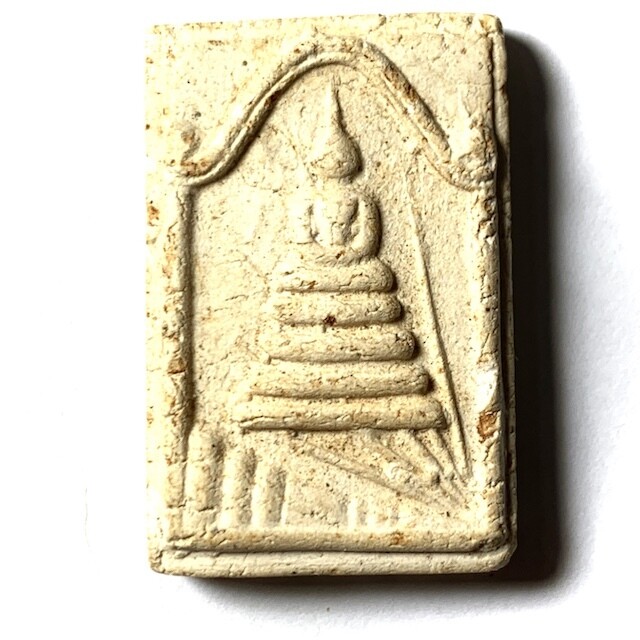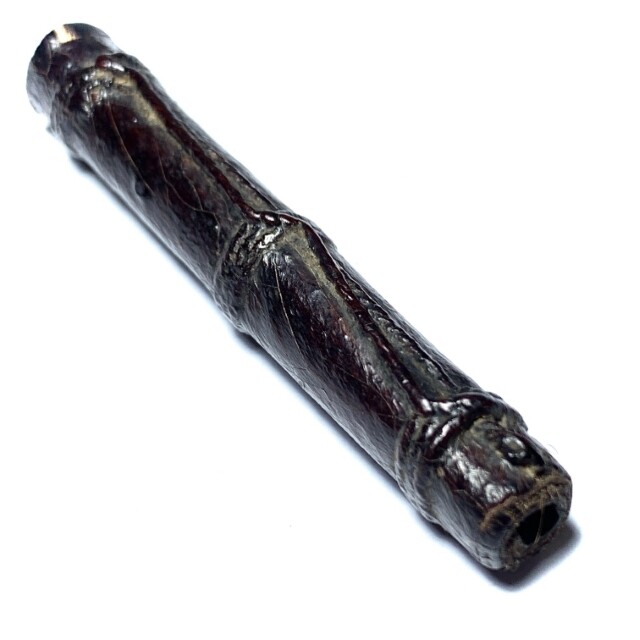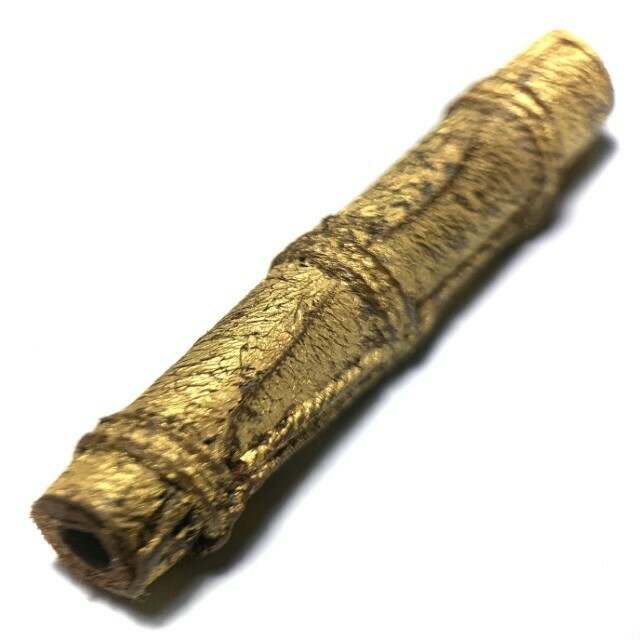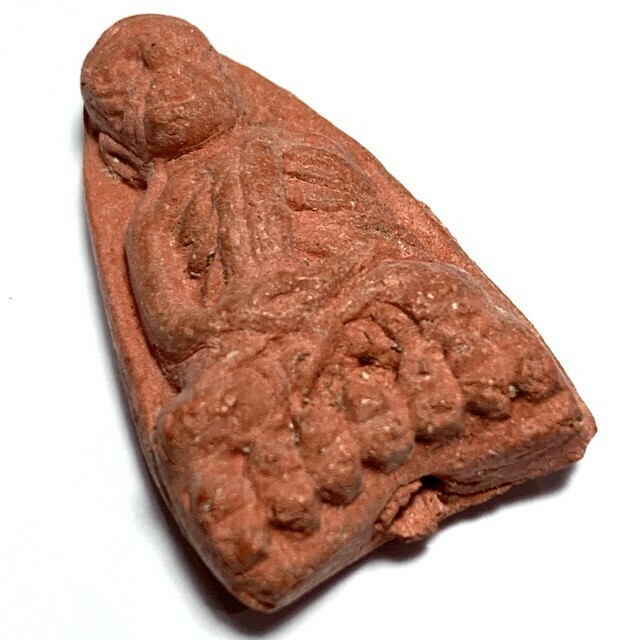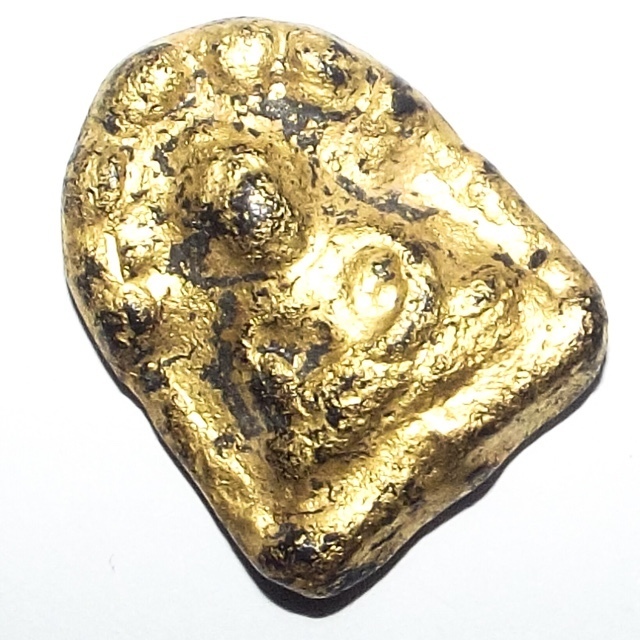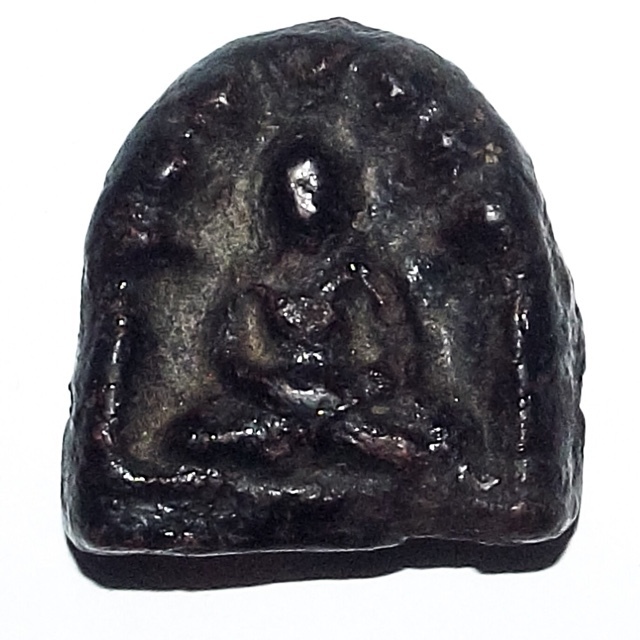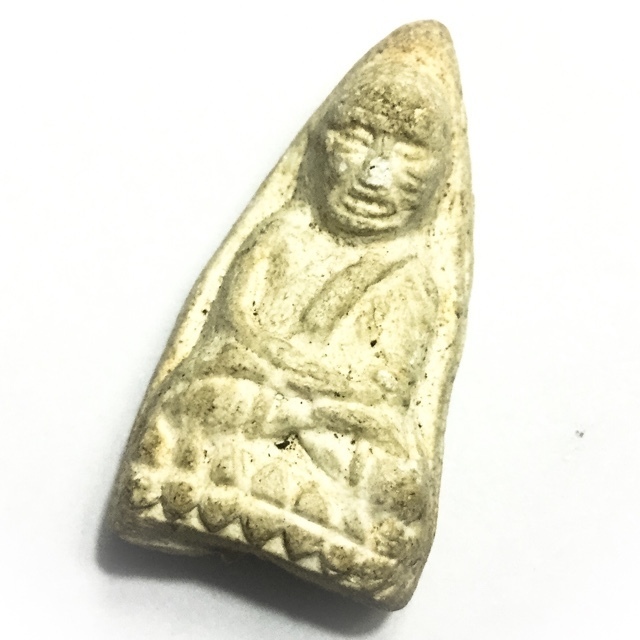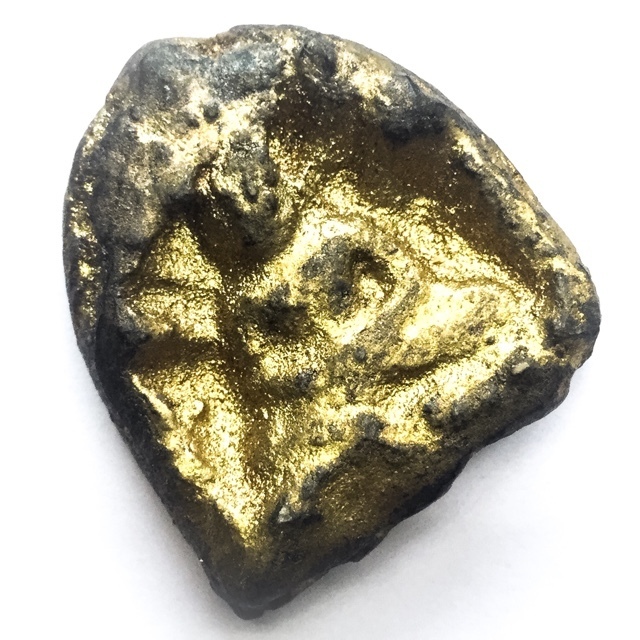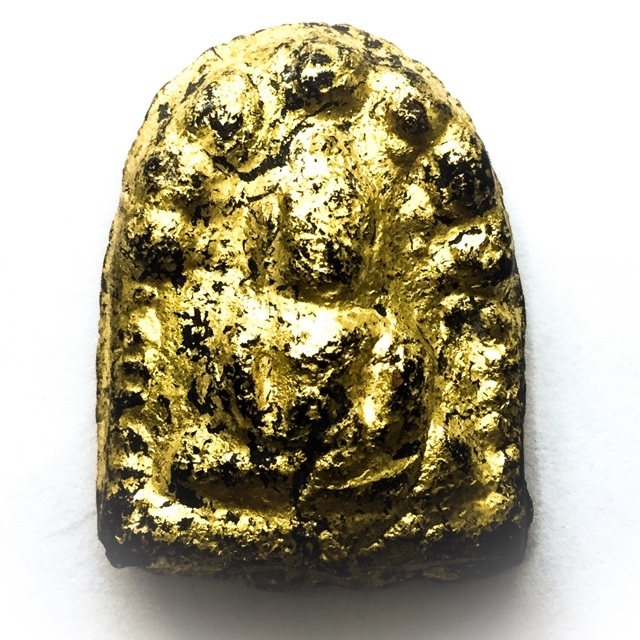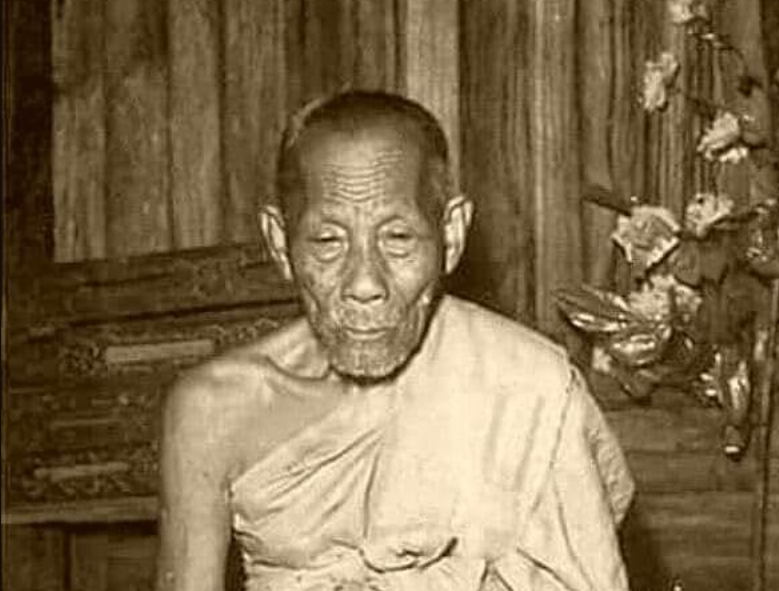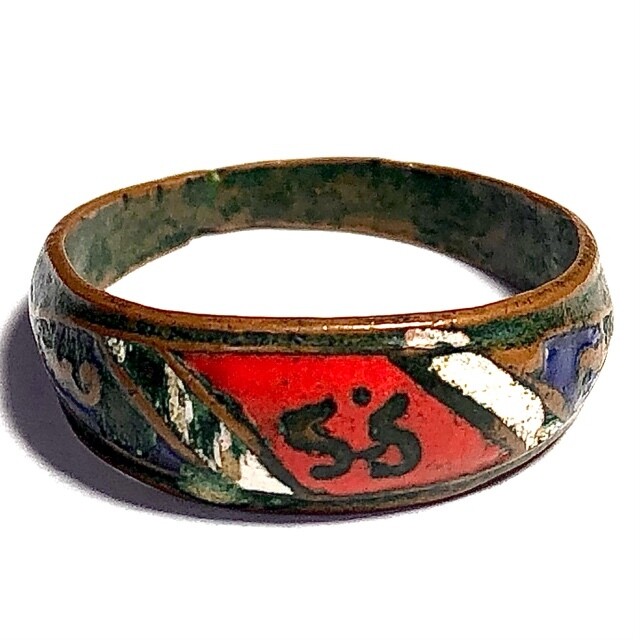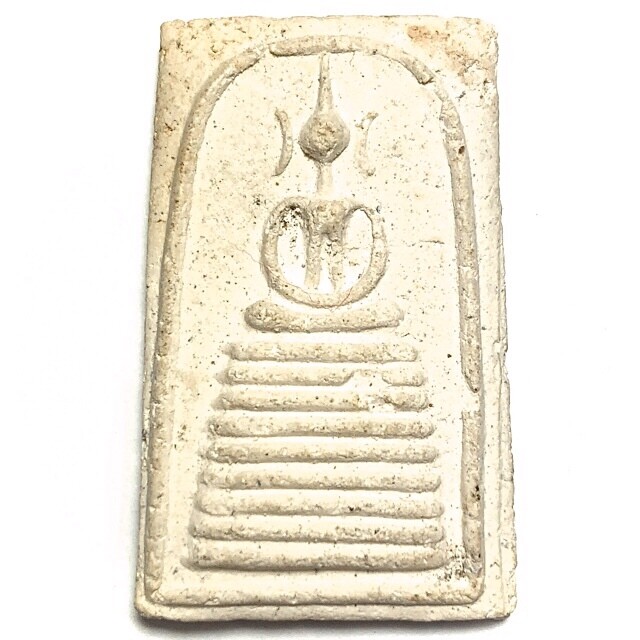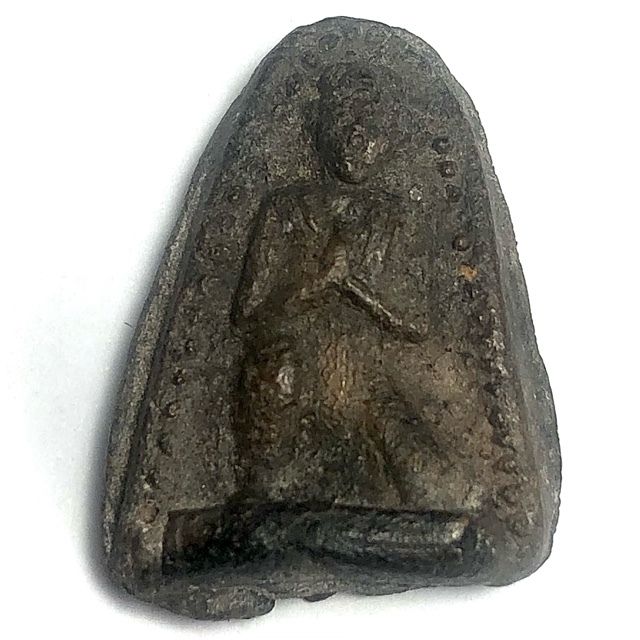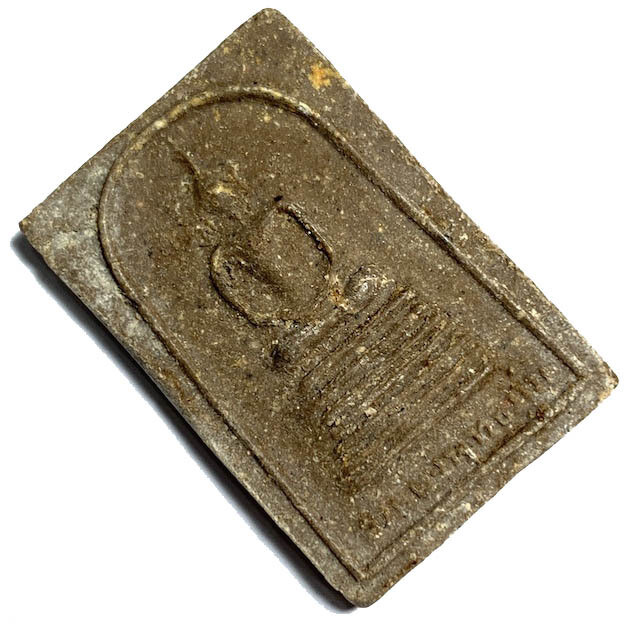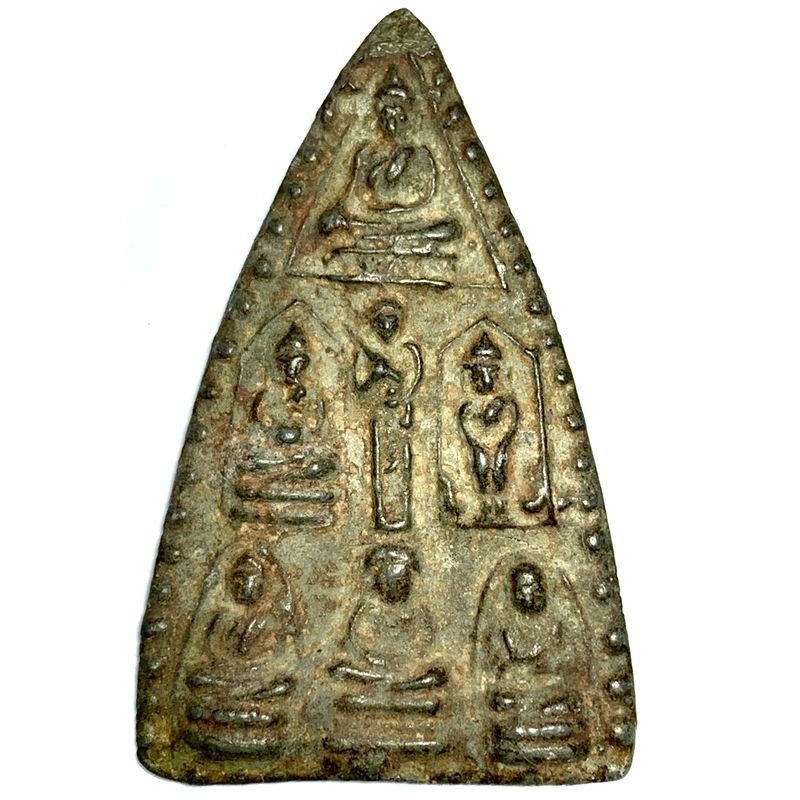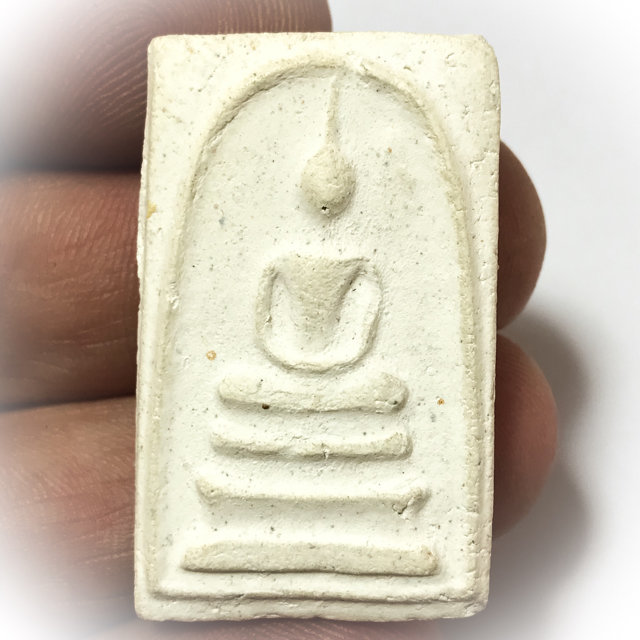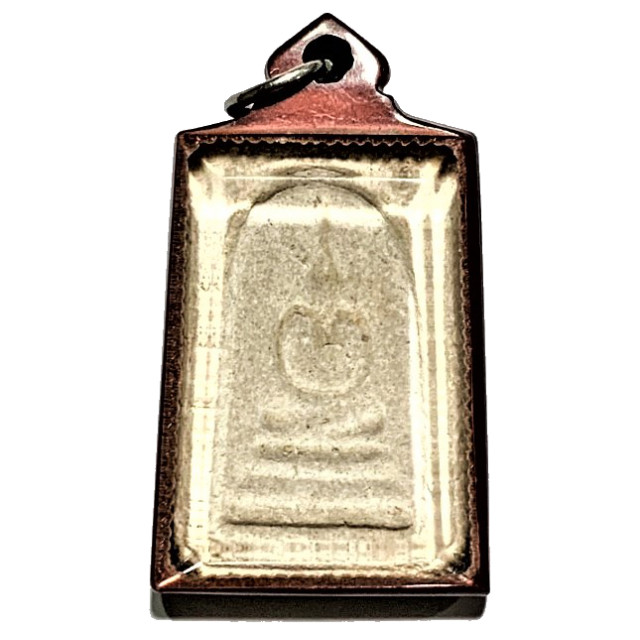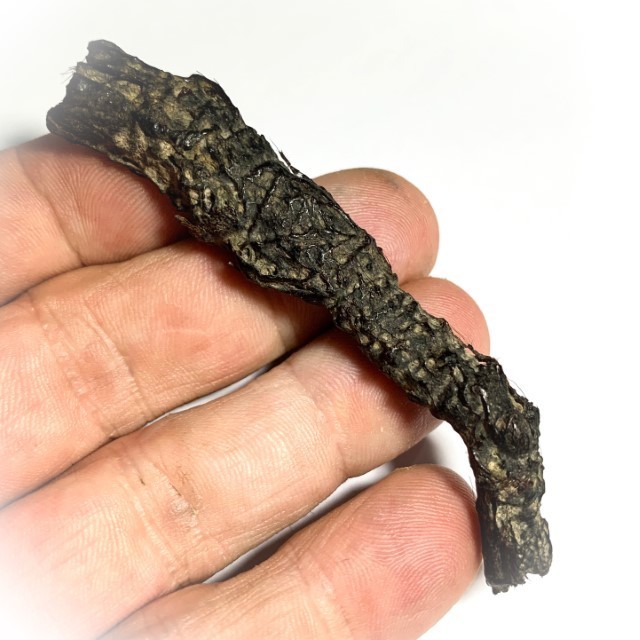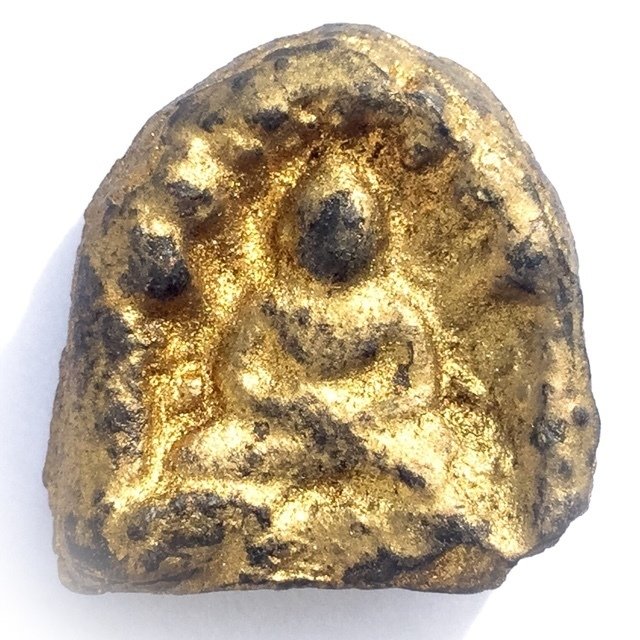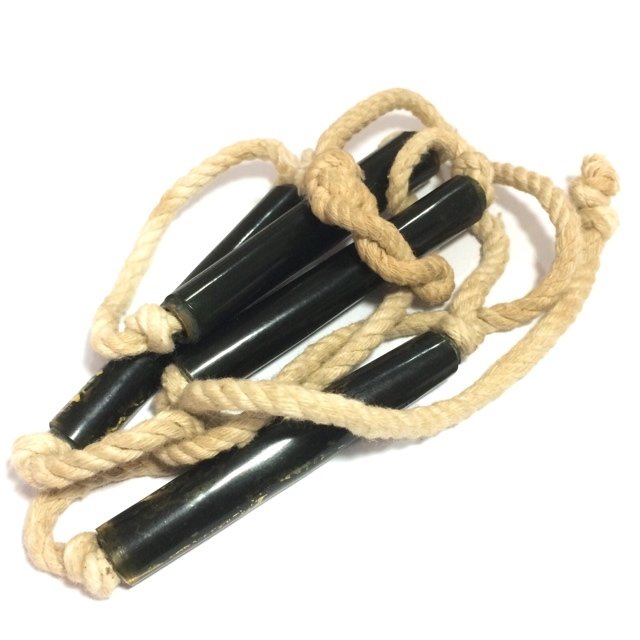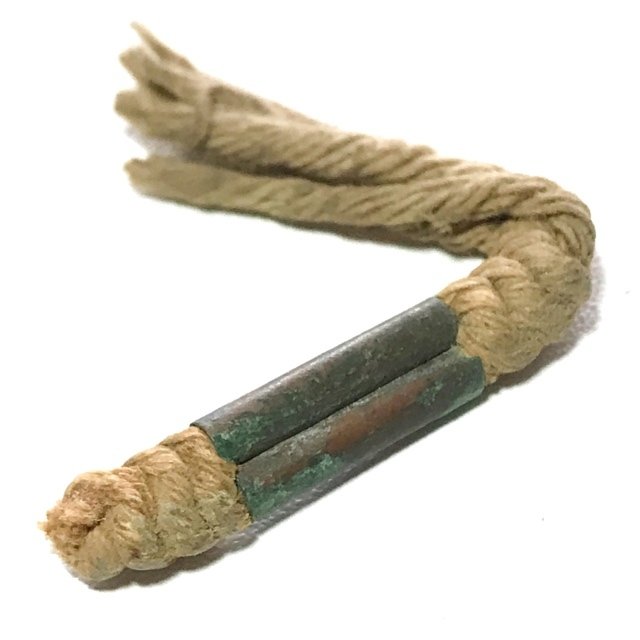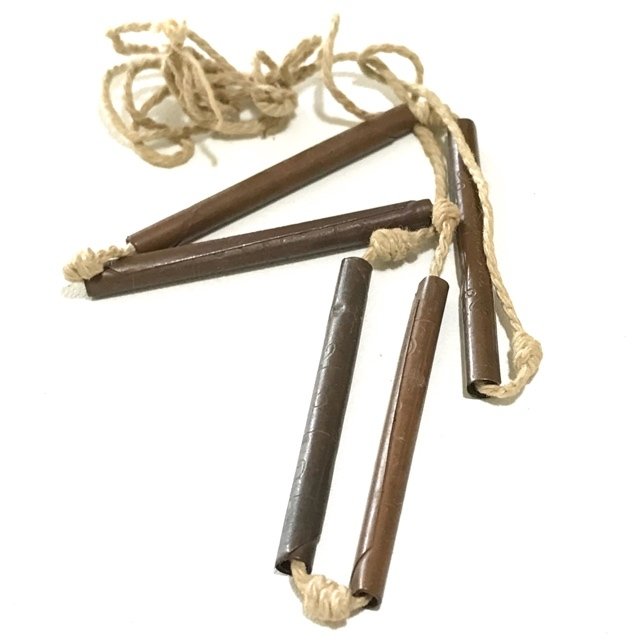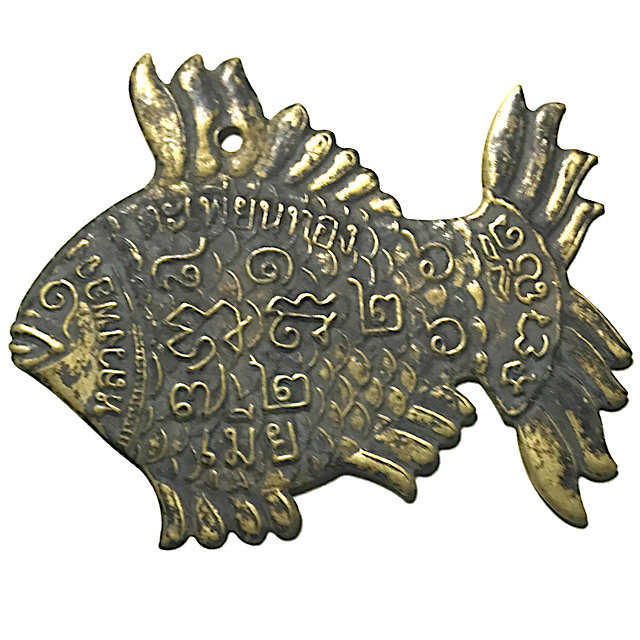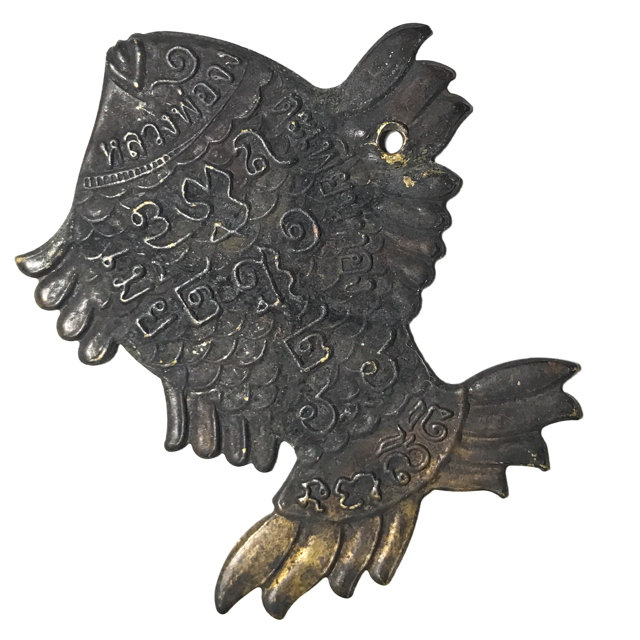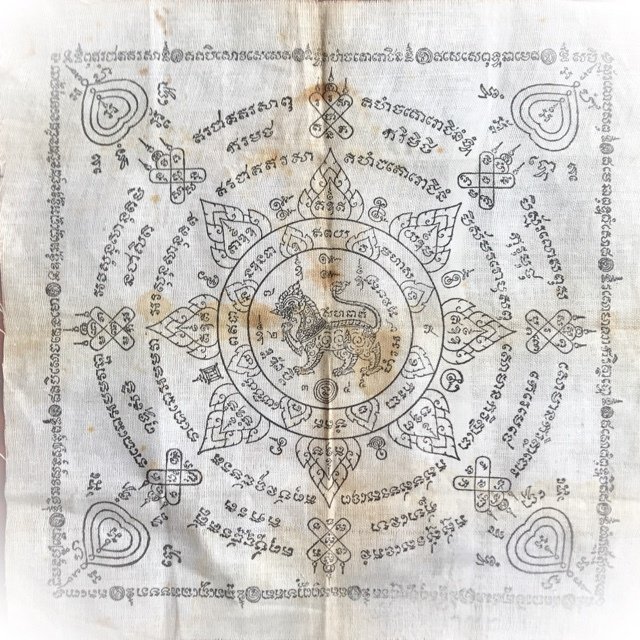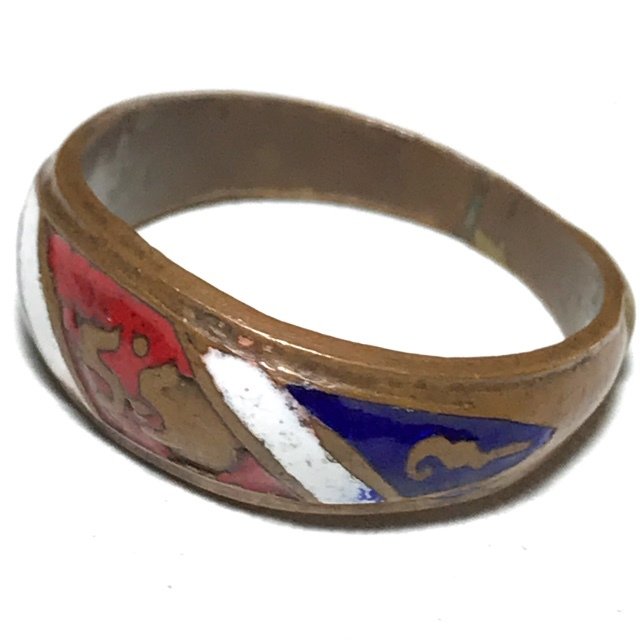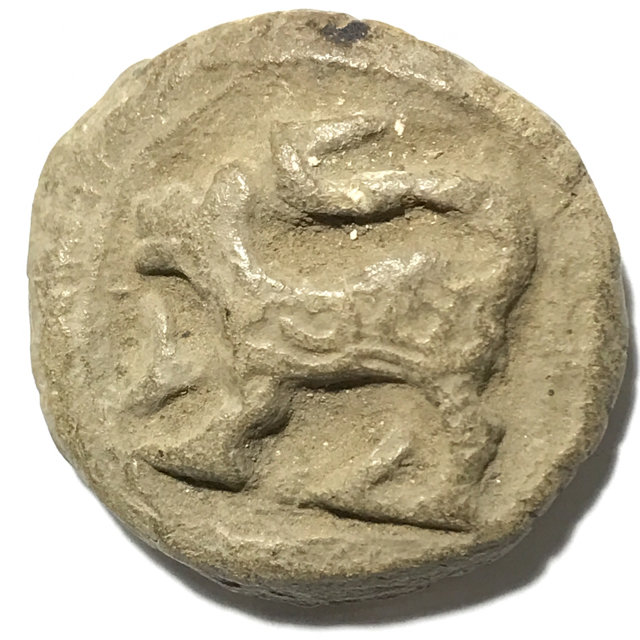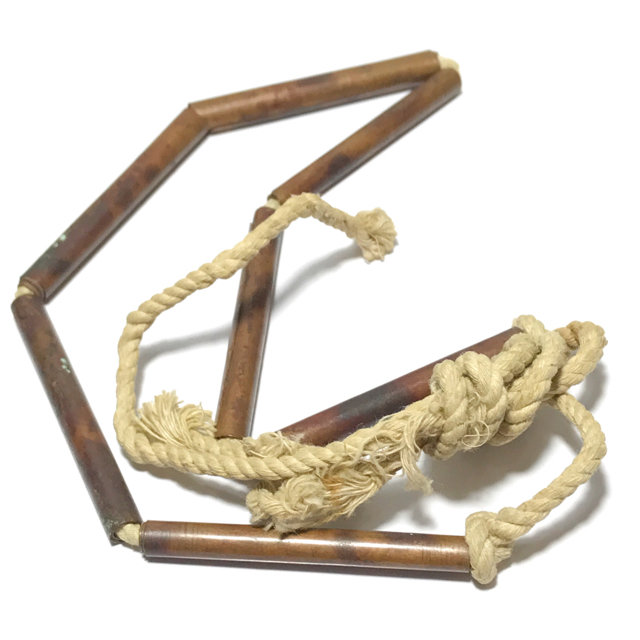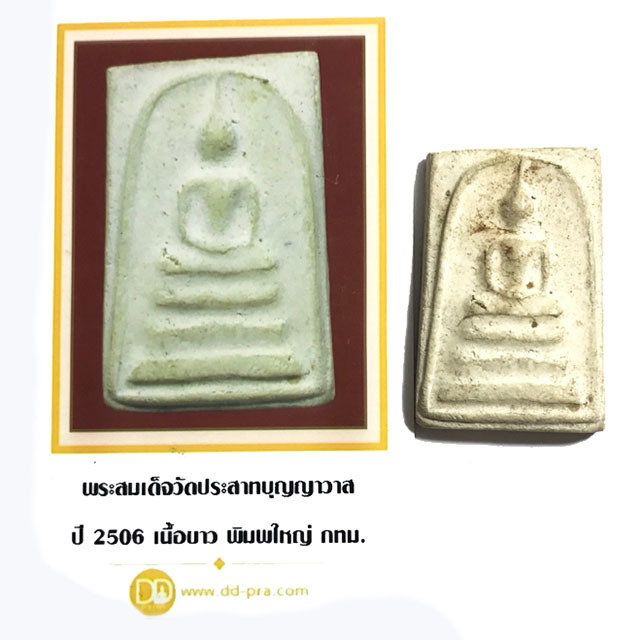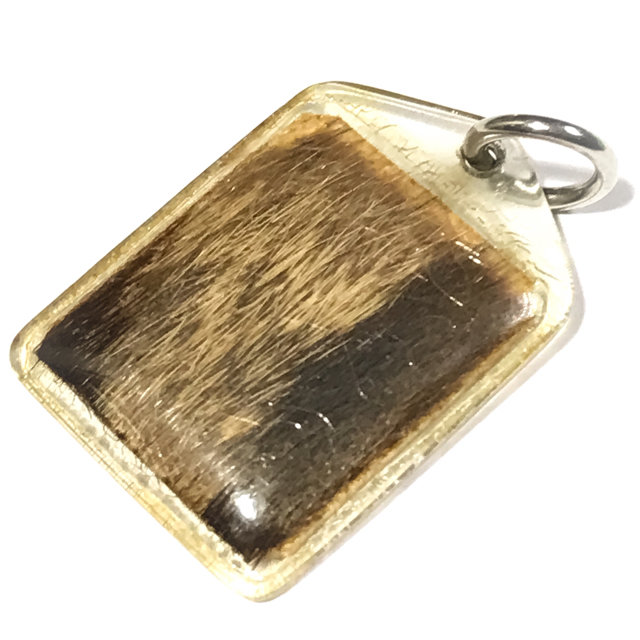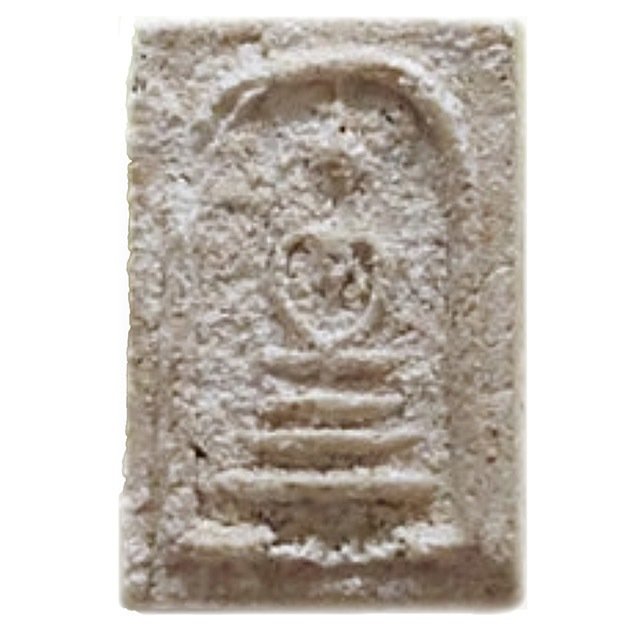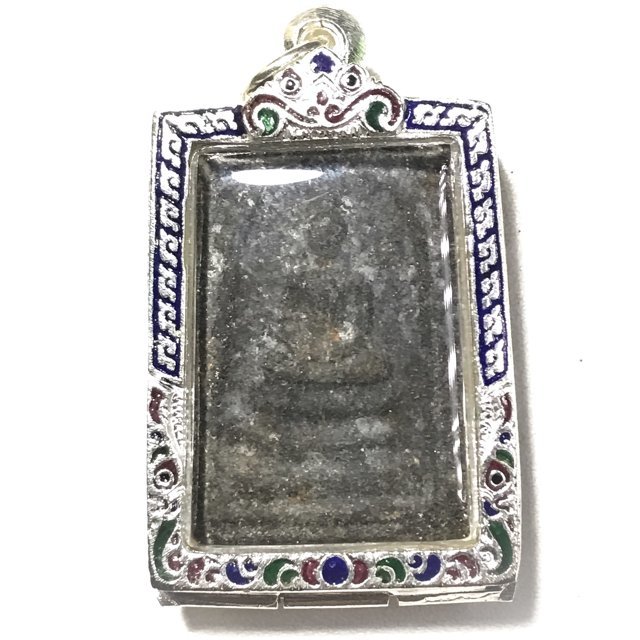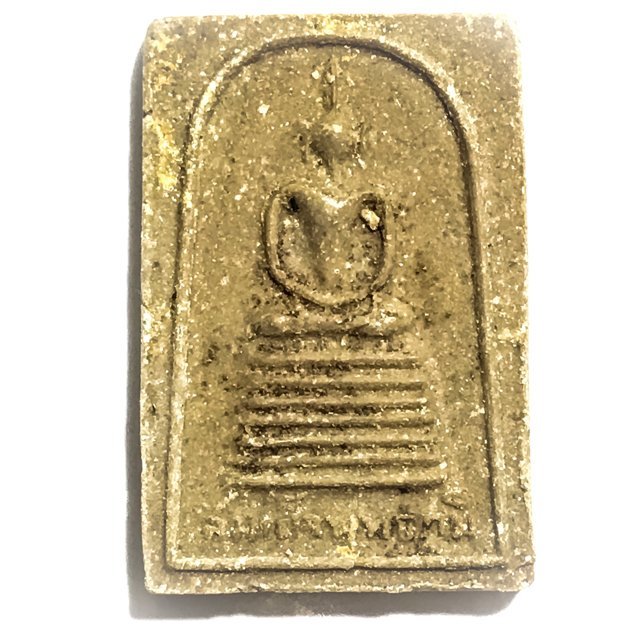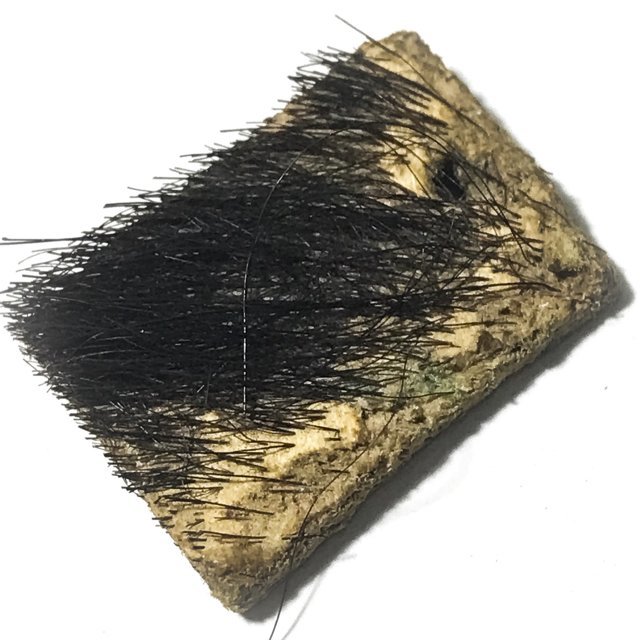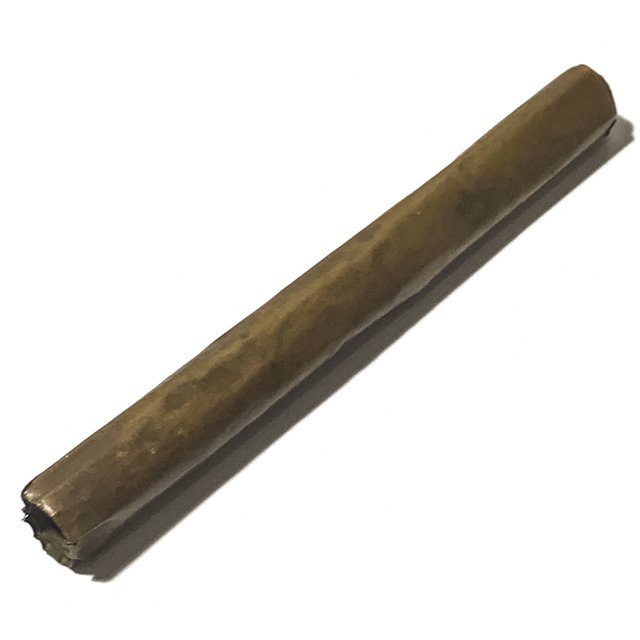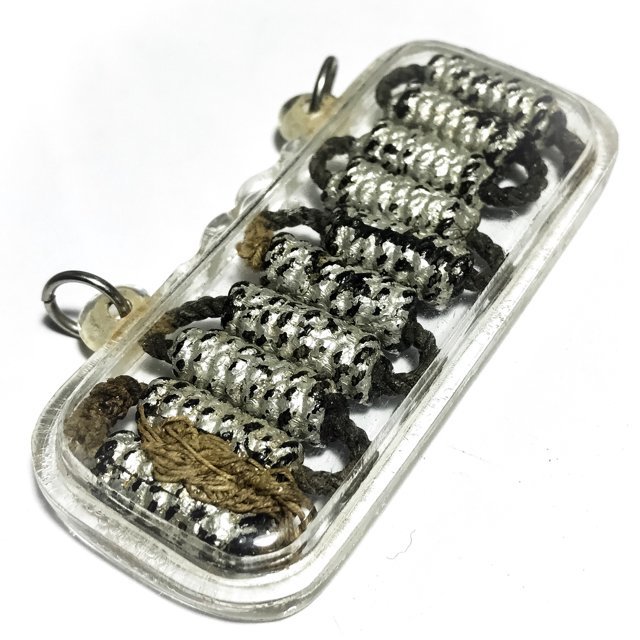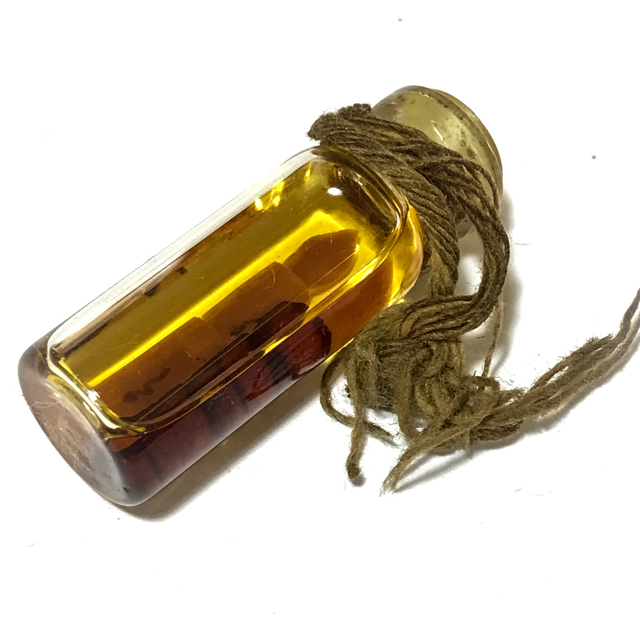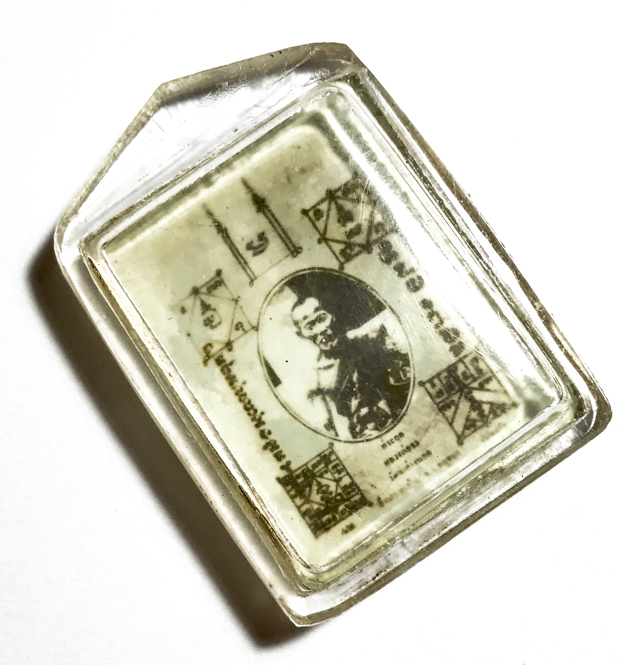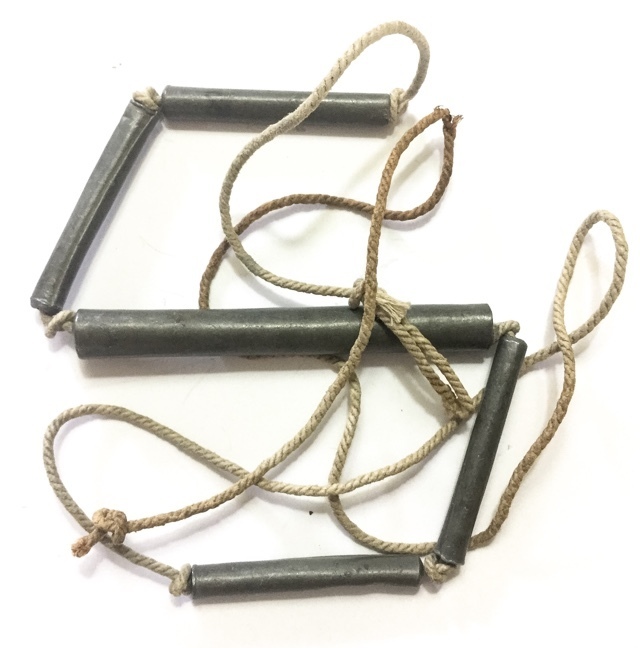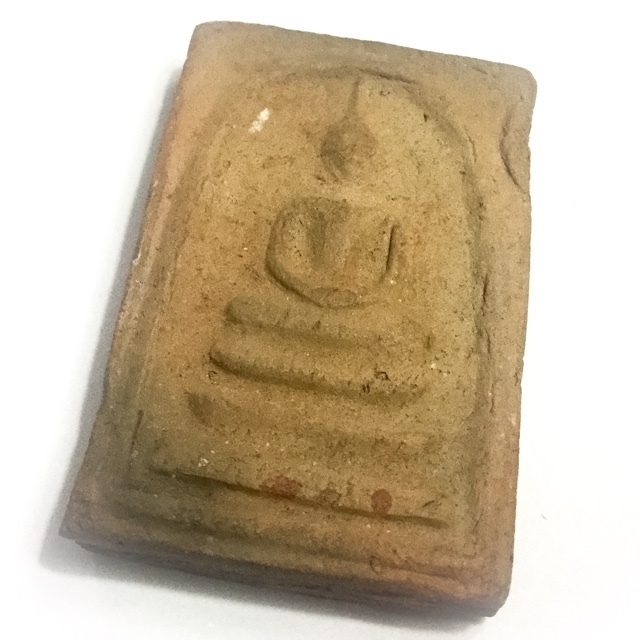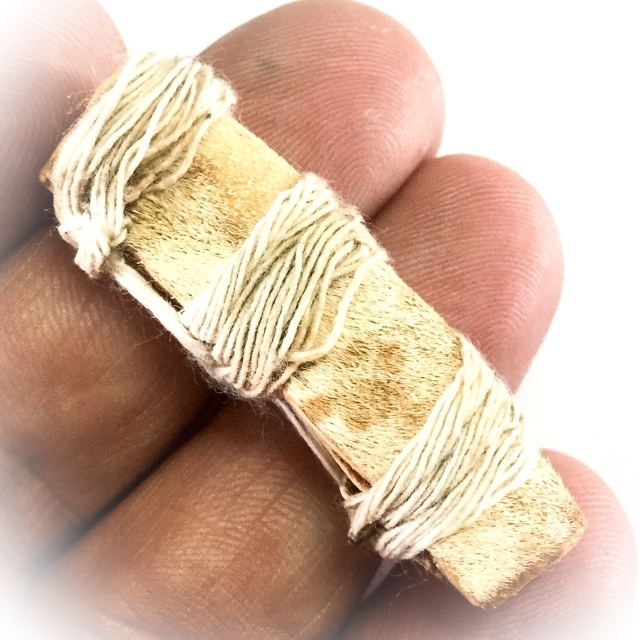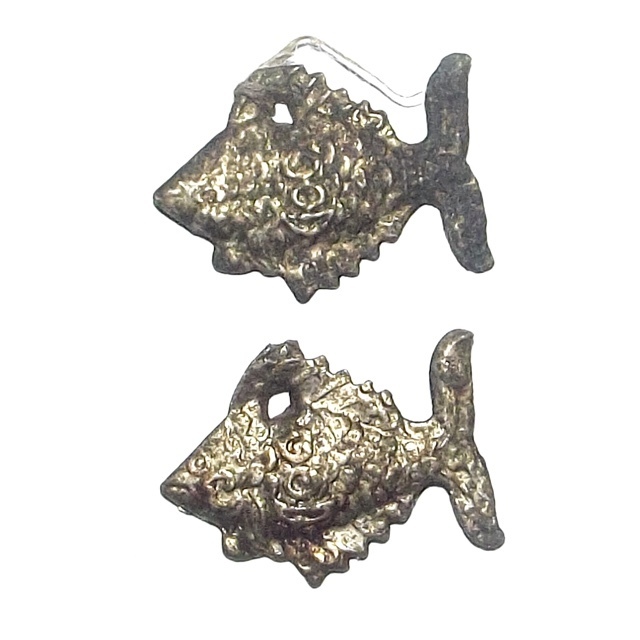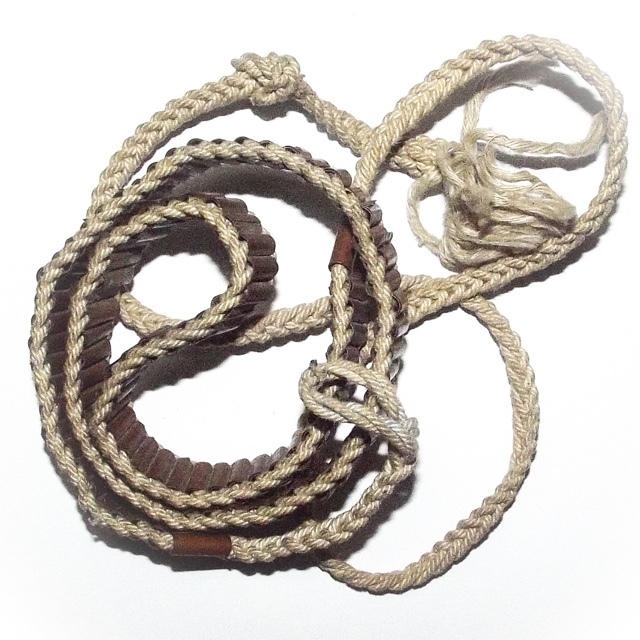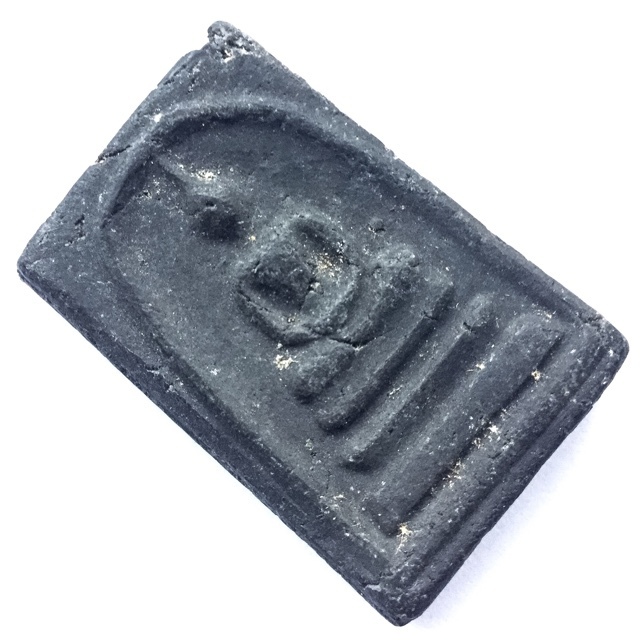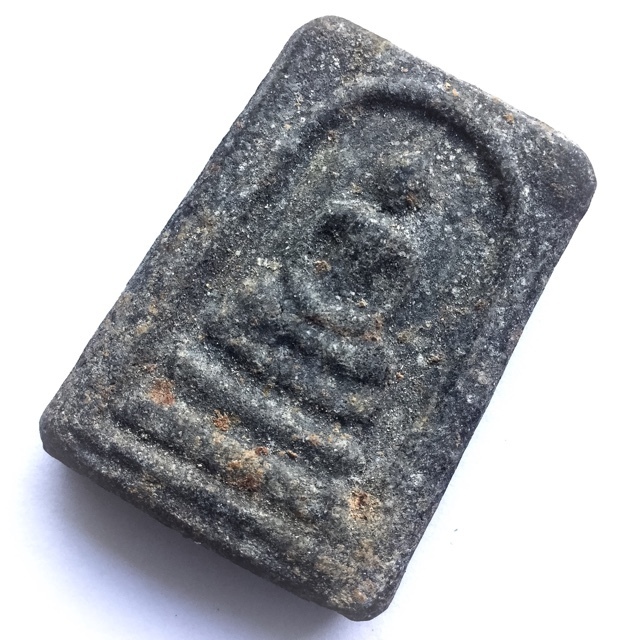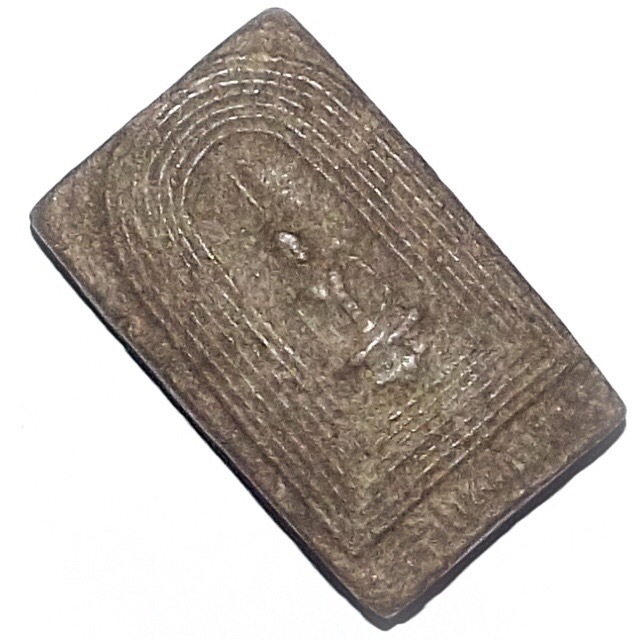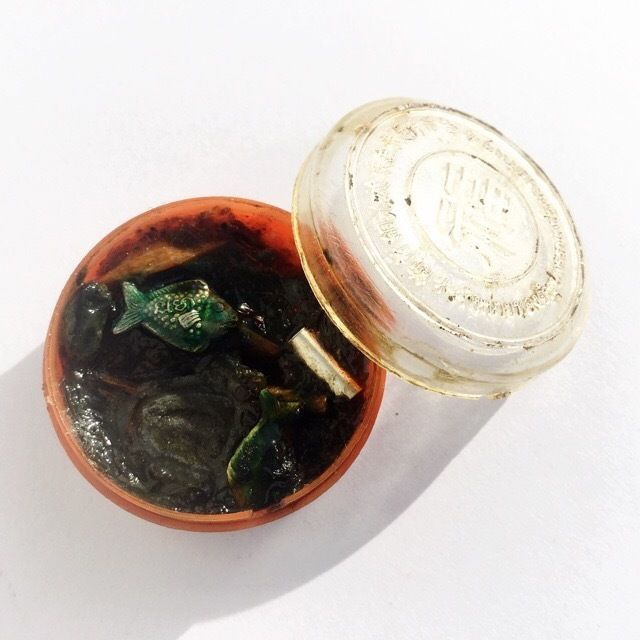Life and Amulets of of Luang Por Jong, Wat Natang Nok
The Epitomy of Compassion and Protective Power – An Immortal Legend That Never Fades
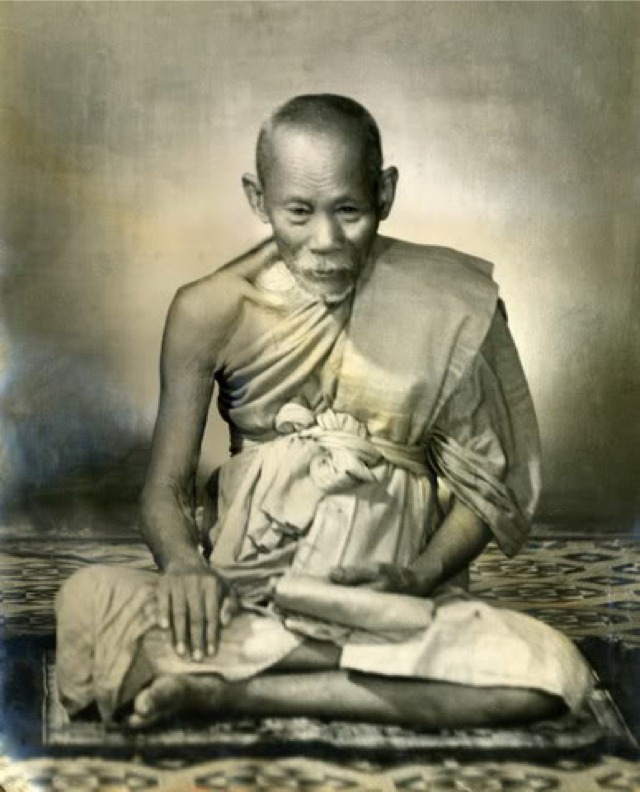
Within the circles of master amulet collectors, it is impossible to omit the name of Luang Por Jong Buddhāsaro of Wat Natang Nok when discussing the great monks of the Indochina War era. He was honored as one of the “Four Heavenly Masters” alongside Luang Por Jād, Luang Por Khong, and Luang Por Ī. Together, they were remembered under the legendary phrase “Jād – Jong – Khong – Ī.” Luang Por Jong’s reputation rested on both his mastery of invulnerability magic (khongkrapan chatri) and his extraordinary aura of loving-kindness, earning him the title “The God of Compassion.” This study therefore seeks to examine his life and influence in detail to deepen understanding of his legacy among experts.
Early Life and Background
Luang Por Jong, formally known as Phra Athikan Jong Buddhāsaro, was born on Thursday, March 6, 1872, in Ban Na Mai, Bang Sai District, Ayutthaya Province, during the early reign of King Rama V (King Chulalongkorn). He was the eldest child of Mr. Yot and Mrs. Klip, with two younger siblings: Mr. Nin and Ms. Plik. Later, Mr. Nin also became ordained and eventually became abbot of Wat Natang Nai.
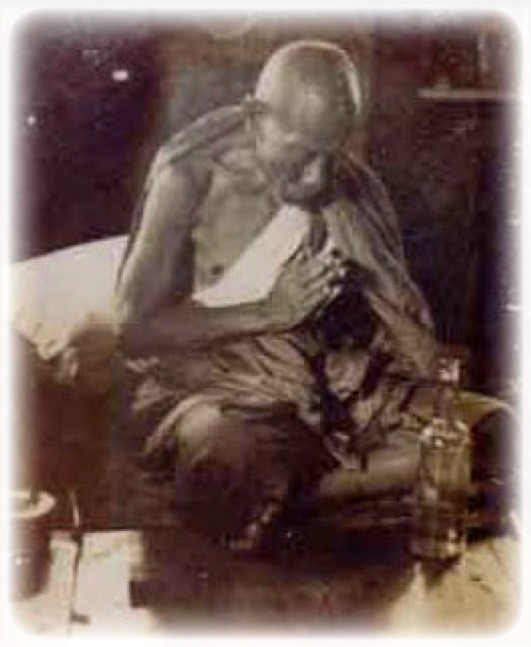
As a child, Luang Por Jong’s health was weak. He suffered from chronic parasites, poor eyesight, and partial hearing loss, and was thin and frail. However, unlike most children, he showed a natural inclination towards Buddhism, often visiting temples and engaging in merit-making. At the age of 11, his father arranged for him to be ordained as a novice monk at Wat Natang Nai. Remarkably, after ordination, all his illnesses disappeared. This was seen not only as a miraculous healing but also as evidence of accumulated merit from past lives, revealed through the act of ordination. The event greatly influenced local belief in his spiritual power, becoming the foundation of his later reputation as a miracle-working monk.
In 1892, at age 21, he was ordained as a monk at Wat Natang Nai. His preceptor was Luang Por Sun of Wat Bang Plamo, with Phra Ajahn In, abbot of Wat Natang Nok, serving as his kammawācācariya (reciter of the ordination formula). He also studied with other famous teachers, such as Luang Pu Pan of Wat Phikul Sokhan, who shaped him into a master of sacred Buddhist magic.
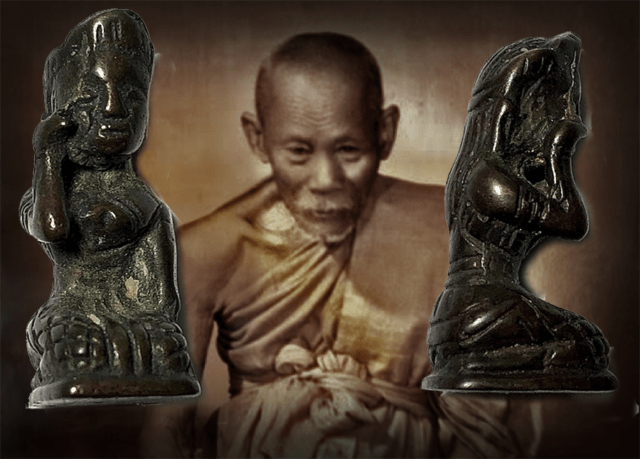
Miracles and Legendary Accounts: From Ghost Soldiers to Sacred Sand
Luang Por Jong’s powers became widely recognized during the Indochina War. Amulets blessed by him were distributed to Thai soldiers, leading to extraordinary battlefield experiences. The most famous tale was that of the “ghost soldiers.” Soldiers wearing his protective shirts or carrying his amulets reportedly survived gunfire unharmed; some who were shot down rose again to continue fighting, causing enemy troops to nickname them “ghost soldiers.”
Another well-known story was the legend of the “sacred sand.” During wartime, Luang Por Jong was invited to board an airplane and scatter consecrated sand to protect the land below. Pilots testified to this event, demonstrating the adaptation of traditional magic into modern contexts. These accounts cemented his reputation as a monk whose influence extended into the national history of Thailand.
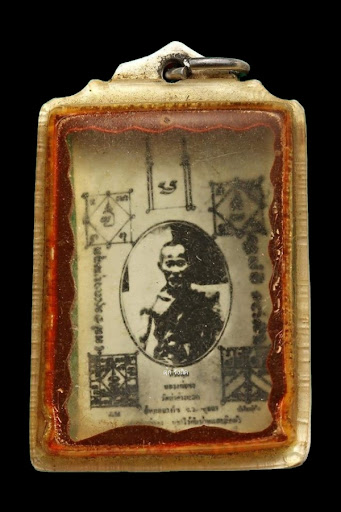
Roop Tai LP Jong Sacred Blessed Photo
Luang Por Jong passed away on February 17, 1965. His death was linked to a cryptic prophecy he once made: “When the lottery draws triple zero, that will be the day of my death.” On the very day of his passing, the winning number was indeed 000, confirming his words and strengthening faith in his supernatural insight.
Catalog of Sacred Objects – Forms, Materials, and Authenticating Marks
Introduction
For collectors, Luang Por Jong’s sacred objects are not merely charms but historical witnesses to miraculous experiences. Because they were directly connected to wartime survival stories, their value has soared; some coins now command prices from hundreds of thousands to millions of baht. With such demand came counterfeits, making knowledge of authentic features—shapes, materials, and flaws—an essential skill for any serious collector.
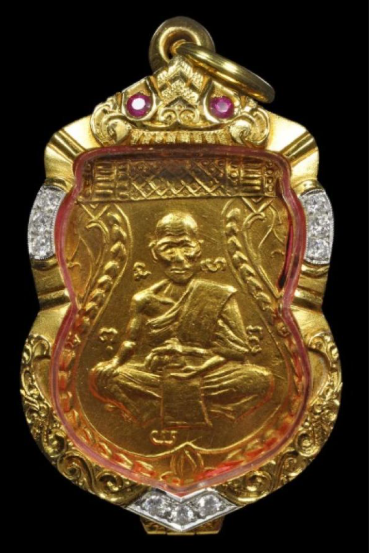
Rian Sema LP Jong 2485 BE Solid Gold
1. The Classic Coins
-
First-Era “Sema” Coin (1942)
Created to commemorate a Buddha image casting and prayer hall construction. Two main versions exist: “large face” and “small face.” The most prized are those with the rear inscription “B.E. 2485” (1942) arched along the edge, known as “arched BE.” Made mostly in copper, the rarest pieces retain their original reddish “fire-skin” patina, fetching up to millions of baht. Silver- and gold-plated versions also exist. Authentication requires checking facial details, fine hairlines, overlapping edge lines, and the “pan depression” (a concave surface caused by traditional pressing). Genuine coins also show “protruding rim metal” and gear-like edge cuts from old presses. -
Six-Cycle “Sema” Coin with Lion Reverse (1944)
Struck to celebrate his 72nd birthday, often called the “novice face” coin due to its youthful portrait of the master. Thin copper and alpaca were used, and pieces typically display a “pan depression” and filing marks along the rim, proving authenticity. -
Seven-Cycle Coin with Inscription Reverse (1956)
Created to fund the construction of a new school building at Wat Natang Nai, initiated by his younger brother, Luang Por Nin. This marked a shift from wartime amulets to educational patronage. Exactly 500 silver and 5,000 copper coins were produced. The coin’s front bears protective mantras including the essence of Buddhist sutras, symbolizing the deep integration of doctrine into the consecration ritual.
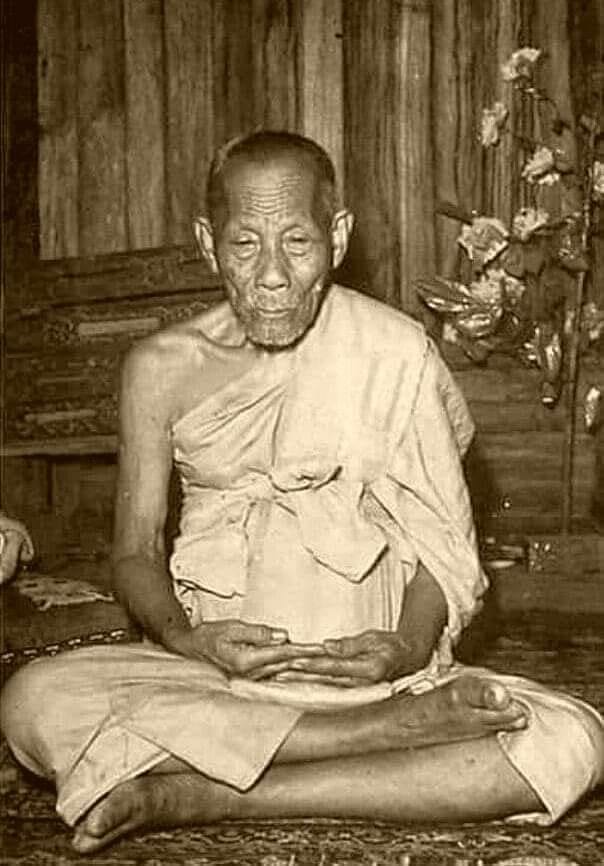
2. Esteemed Talismans
-
Takrut (scroll charms): Made in different sets, such as single takrut ton, sets of 4, 12, or 16, and the special Maha Rud takrut. Believers used them differently: worn in front for invulnerability or at the back for escape and avoidance. Materials included copper, lead, and in rare cases tiger forehead skin.
-
Yantra Shirts and Cloths: Particularly popular during wartime, such as the Lion Power shirt and the 16-lotus Lion yantra cloth. They were believed to grant invulnerability, protection, and authority. Red and white versions existed, with long-sleeved examples being the rarest.
-
Other Charms: These included woven fish talismans in silver or gold, the “Rak-Yom” figures for attraction, the Chimphalee flag for prosperity, and consecrated waist cords made by villagers and blessed by him.
Lessons for Modern Collectors
Studying Amulets in the Digital Age: “Sharp Eyes Before Gentle Ears”
Today’s market is flooded with counterfeits, making it dangerous to rely only on hearsay. Collectors speak of fakes as “bullets” ready to strike careless buyers, leading them to be “cheated” or “burned.” To advance in the field, one must develop sharp visual discernment (ta thueng) rather than being easily swayed (hu mai bao). The surest path is to memorize the authentic features of genuine amulets, especially flaws that counterfeiters cannot reproduce, such as edge cuts, protruding rims, and pan depressions.
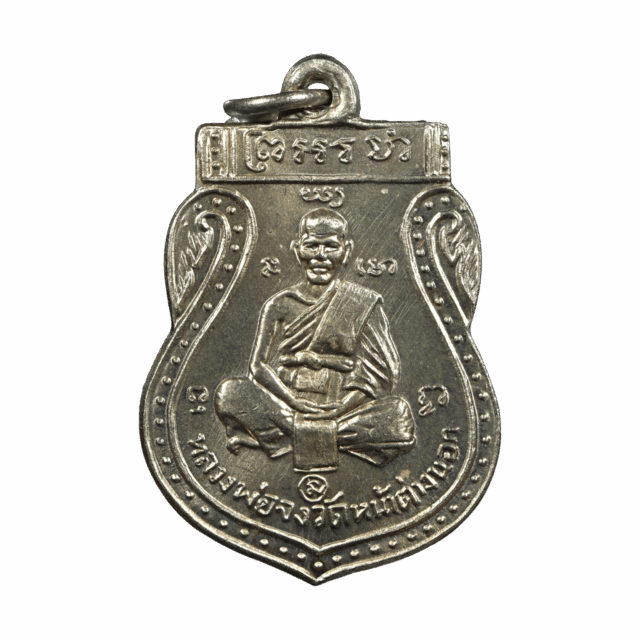
Summary Table: Popular Coins of Luang Por Jong, Wat Natang Nok
| Model | Year | Features | Materials | Key Authenticators |
|---|---|---|---|---|
| First Sema | 1942 | Large/Small Face, “Arched BE” | Copper, Silver, Gilt | Sharp portrait, fine hairlines, pan depression, protruding rim |
| Six-Cycle | 1944 | Lion reverse, “Novice Face” | Copper, Alpaca | Youthful face, pan depression, filed rim |
| Seven-Cycle | 1956 | Inscription reverse | 500 Silver, 5000 Copper | Protective mantras on front, detailed script on back |
The Beauty of Buddhist Art and the Power of Sacred Merit
The sacred objects of Luang Por Jong are significant not only for their legendary spiritual power, attested to in tales of ghost soldiers and sacred sand, but also for their historical value. They reflect the deep faith of people seeking spiritual refuge in wartime. Studying these amulets is not only about spotting authentic flaws but also about understanding the beliefs, way of life, and history of an era.
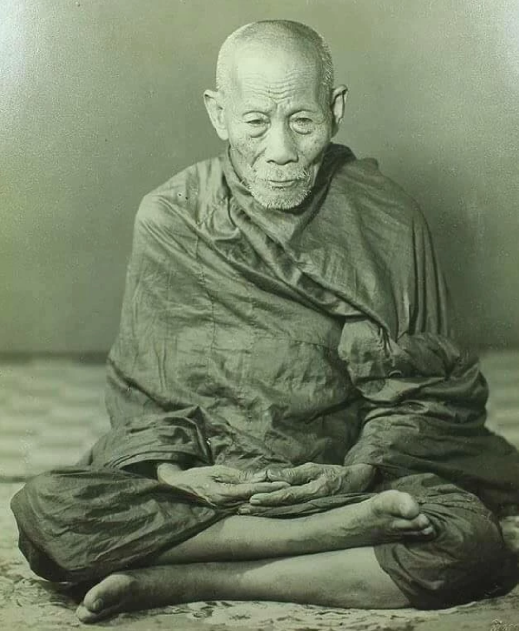
Ultimately, according to Buddhist tradition, any amulet—whether priceless or ordinary—becomes truly effective only if the devotee has sincere faith, practices virtue, and remembers the spiritual guidance of their master. Through this, the sacred objects of Luang Por Jong continue to serve as true sources of inspiration and refuge.
Luang Por Jong (Wat Na Tang Nork)
 Luang Por Jong of Wat Na Tang Nork was one of the great Guru Masters of the Ayuttaya Province, in line with the Great Luang Por Parn of Wat Bang Nom Kho, and is one of the Great Masters who assisted the Thai Military with powerful Kong Grapan Chadtri and Klaew Klaad amulets during the Indochina Wars. Luang Por Jong lived from 2415 BE to 2508 BE, and was one of the previous generation of attained Masters, of National and International Fame. Known for his Kong Grapan Chadtri Klaew Klaad protective amulets handed out to soldiers during the Indochina Wars, his Pla Tapian Maha Lap Kaa Khaay amulets are also renowned for their ability to instigate good commerce and prolific sales quotas with sales persons.
Luang Por Jong of Wat Na Tang Nork was one of the great Guru Masters of the Ayuttaya Province, in line with the Great Luang Por Parn of Wat Bang Nom Kho, and is one of the Great Masters who assisted the Thai Military with powerful Kong Grapan Chadtri and Klaew Klaad amulets during the Indochina Wars. Luang Por Jong lived from 2415 BE to 2508 BE, and was one of the previous generation of attained Masters, of National and International Fame. Known for his Kong Grapan Chadtri Klaew Klaad protective amulets handed out to soldiers during the Indochina Wars, his Pla Tapian Maha Lap Kaa Khaay amulets are also renowned for their ability to instigate good commerce and prolific sales quotas with sales persons.

